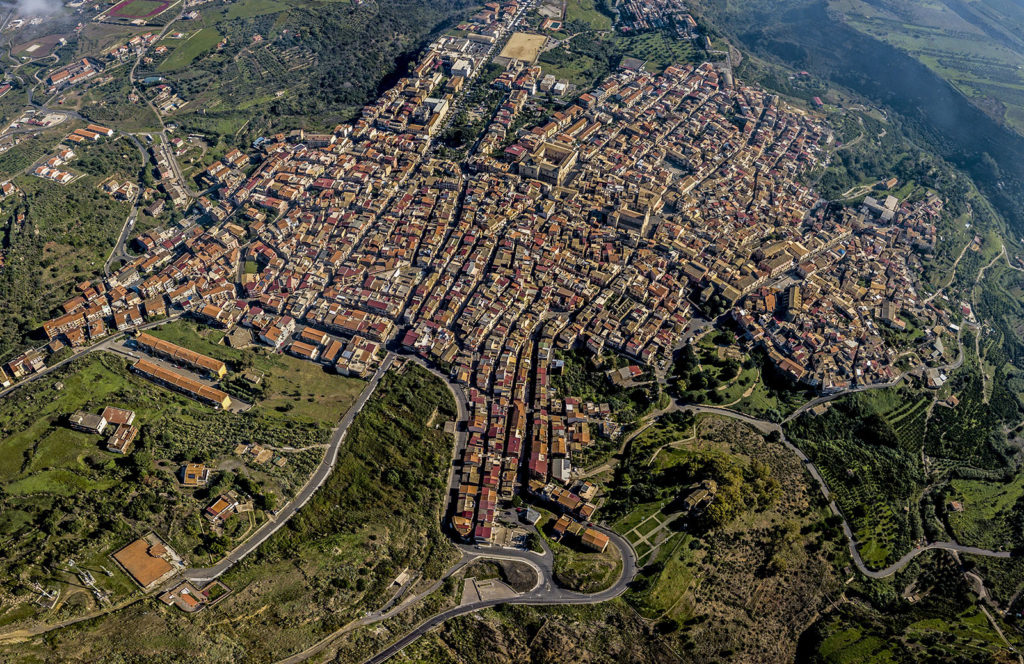The town of Militello in Val di Catania, once called Militello in Val di Noto, is one of the centres rebuilt on a new site following the great earthquake of 1693.
Located in the northern part of the Hyblaean Mountains, it was rebuilt in a grid layout further upstream but still nearby the former site. The name Militellus, or Militum Tellus, land of soldiers, is said to be of Roman origin like the town, though no proof of this has yet been found. Another fascinating theory links the name’s origin to the honey-coloured local stone, from which “Mellis Tellus”, or land of honey, would derive.
The name Militellus, or Militum Tellus, land of soldiers, is said to be of Roman origin like the town, though no proof of this has yet been found. Another fascinating theory links the name’s origin to the honey-coloured local stone, from which “Mellis Tellus”, or land of honey, would derive.
The first settlement is thought to date back to the Byzantine era near the valley of the river Lèmbasi, south of the current town. This is shown by the transformation of the
necropolises
into homes and places of Christian worship.
Militello was also a fortified centre and remained a fiefdom until the 18th century, following the rule of the Barresi and Branciforte lords. The town reached maximum expansion in the 17th century, before the great earthquake of 1693. In fact, the enlightened Prince Francesco Branciforte designed a new road layout and came up with a possible way to expand the town without completely changing site.
The two main churches,
Santa Maria della Stella
(St. Mary of the Star) and San Nicolò (St. Nicholas), were rebuilt in the upper part of the town in late Baroque style, following the destruction of the earthquake.